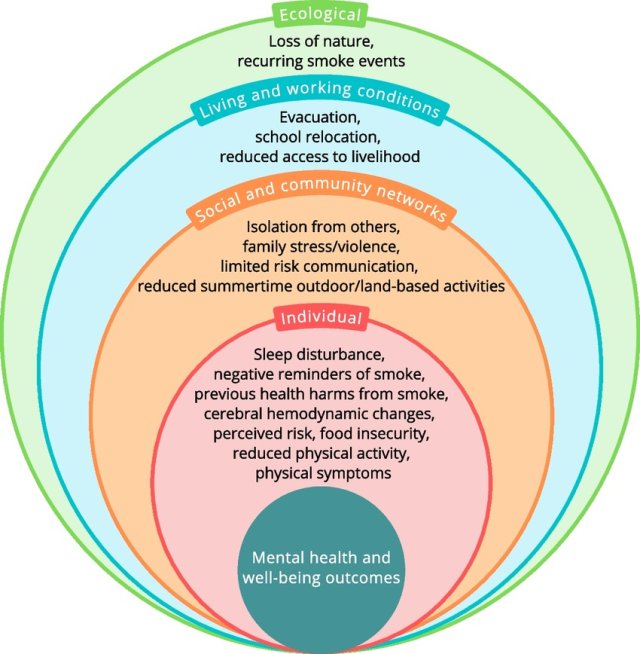Symptoms of Mental Health Effects from Smoke Exposure
It is common for individuals to become stressed when smoke is in the air. Several factors contribute to stress and can be attributed to smoke, including some health-protective measures such as staying indoors and reducing physical activity (Eisenman and Galway, 2022). Smoke can disrupt plans and lead to worry about personal safety for oneself and loved ones.
During a smoke event, people are faced with making daily, risk-based decisions that add to their stress burden. Some of these decisions include when to go outside, how much to exercise, whether to wear an N95® or P100® respirator, when to open or close windows, etc. Increasingly, studies are showing the presence of smoke is associated with:
- Sleep disruption (Rodney et al. 2021; Vincent et al. 2018),
- Growing worry about safety and well-being (Humphreys et al. 2022; Mirabelli et al. 2022), and
- Feelings of fear, hopelessness, frustration, isolation, loneliness, anxiety and uncertainty (Humphreys et al. 2022; Dodd et al. 2018).
The longer a smoke event lasts, the more people may see a decrease in their mental and emotional health (Dodd et al. 2018).
In Figure 5 below, Eisenman and Galway (2022) propose a model demonstrating how smoke exposure relates to adverse mental health and well-being. The mechanisms operate at several levels that are nested and interactive and range from individual (e.g. sleep disorders, reduced physical activity, perceived risk) to ecological (e.g. loss of nature).

Source: Eisenman et al. 2022
For people who have experienced nearby wildfires or who have been evacuated due to a wildfire, seeing smoke, even from a distance, can trigger feelings of fear or concern (Christianson et al. 2019). If the smoke is from a nearby fire, the stress may be heightened by worry about flames or destruction of homes, property and the natural environment.
